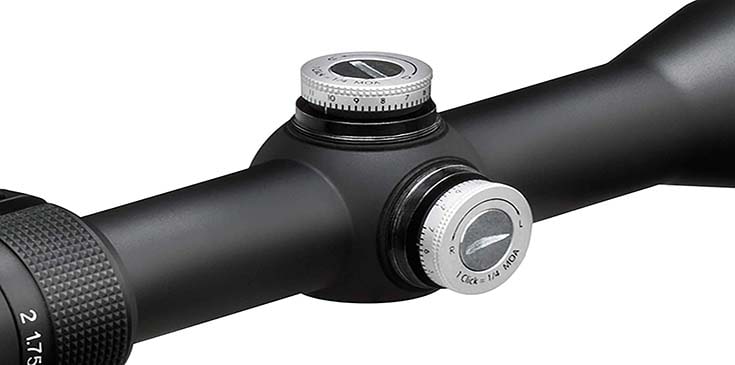The numbers on a scope describe a lot of things about its power, performance, and quality. It is quite essential to understand what does spotting scope numbers mean to get an inclusive idea about the scope. In today’s article, we will provide you detailed information about different numbers and measurements in a scope.

Contents
Magnification Range
The magnification range is a broadly used term in scope specification. It let you know how far you can see through the scope. The magnification is the main reason for which you want a scope in the first place. Scopes can come in different magnification range depending on the price and manufacturer.
If a scope has a 3-9X40 magnification range, then it means the scope can show you the target three times to nine times closer when compared with your naked eyes. Here, the 40 means the objective lens diameter in the millimeter scale. We will let you discuss it in the next paragraph.
Objective Lens Diameter
A scope consists of several optics or lenses. The objective lens is the primary lens of any scope. It gathers the light from the object being observed through the scope. The quality of the views you see through the scope depends on the objective lens mostly.
The bigger the objective lens diameter is, the better the picture will. That is because a bigger objective lens can gather much light in it to produce a bright and clear sight. The objective lens size is mentioned in diameter, and it is stated aside magnification the range.
Field Of View
The field of view (FOV) is the amount of landscape that you can see through your scope from right to left at aa specific distance. It is measured in feet at 1000 yards. As an example, most of the spotting scope under 200 dollars has around 100 ft. Field of view at 1000 yards. That means at 1000 yards; you will be able to see 100 feet from one edge of the scope to another.
The field of view depends on the magnification range. When the magnification is increased, the field of view will be smaller, and when the magnification is decreased, the field of view will be bigger. The FOV is not affected by the objective lens diameter of the scope. It depends on the construction of the scope eyepiece.
Eye-Relief
Eye relief is the distance that you should maintain between your eyes and the eyepiece. To get a full field of view, eye relief measurement is usually mentioned in the inch or millimeter scale. A scope with 3 inches eye relief means you will need to maintain a distance of 3 inches while watching through the scope.
Usually, a less powerful scope has larger eye relief, and a higher power scope has smaller. Besides, the spotting scope has smaller eye relief than the riflescopes. The eye relief scale for spotting scope varies around 16.7-17mm mostly.
Exit Pupil
The exit pupil is used to measure the width of light that leaves the scope, and enter in the eye user. The exit pupil is typically measured in millimeter-scale. A bigger exit pupil may benefit under the low light conditions to show you a brighter image. Not all the scope includes this measurement in the specification. However, you can easily measure it by dividing the objective lens diameter by the magnification of the scope.
Tube Diameter
The tube diameter is a simple term that refers to the outer diameter of the central part of the scope tube. You can only find this parameter in the rifle scopes. The tube diameter of scope doesn’t affect the magnification of the scope. Tube diameter can either comes in 1 inch or 30mm. The larger tube diameter offers you better adjustability than the slimmer one.
Weight
Weight is simply the weight of the entire scope without packaging. It is a simple but very crucial term to consider. As a scope may require carrying continuously, you should consider the proper scope weight while buying.
The number on the scope are some essential terms to understand to use the scope accurately. Hopefully, the above guide will aid you in understanding scope numbers meaning from now on.
Page Source:
- https://www.gunsandammo.com/editorial/the-anatomy-of-a-scope/248420#targetText=The%20knob%20on%20the%20right,the%20firearm%20with%20the%20crosshairs.
- https://www.opticsplanet.com/howto/how-to-choose-a-riflescope-the-numbers.html
- https://targetcrazy.com/optics/optics-resources/what-do-scope-numbers-mean/

